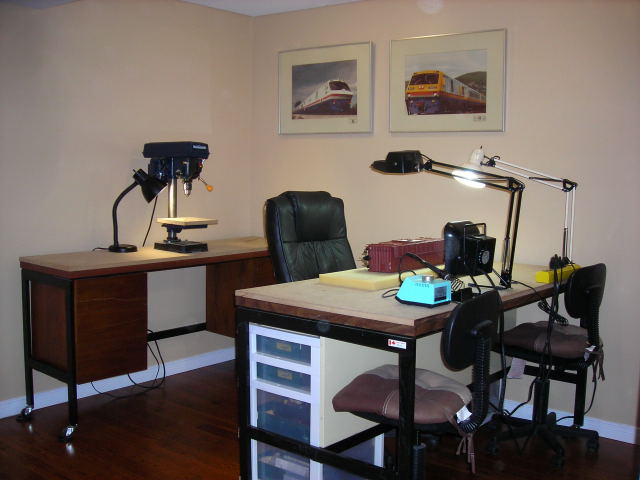Devon - an interesting post.
I bought in to the miniature tool market a few years ago and I really enjoy them. I know you asked about power tools, but I’m going to start with some hand tools that I find very useful.
First off is this nibbler. Great for going through metal, but will also work with plastic.

If you’re going to do any sort of hand laying track, the “Spiker” is one of the best tools available. Puts in two spikes at a slight angle with just two whacks of a small hammer.

Micro-mark is often viewed as an expensive source, but their line of mini power tools is awesome. I have the belt sander, mini-drill, and right angle disk sander. Not pictured is their miniature jig saw, which I don’t use all that much.
I recently purchased a Proxxon Pen sander - a really nifty tool; but, don’t get their sandpaper - it’s exorbitantly expensive. I bought some 3M adhesive sandpaper for a fraction of the cost and just cut the shape myself.
Lastly, a thin beam square that I use all the time. Not power, but effective.

I have a large drill press which is useful, but when it comes to drilling small holes, this setup can’t be beat. It’s from Proxxon and is very sturdy. The little vise is a separate purchase, but really helps making accurately spaced holes.
Now that’s strange. On my computer and in the freight shed it is oriented properly, but not so much here. I don’t see anyplace to change orientation.
I don’t have enough room for a full size table saw. Not only that, but I really like using the Micro-lux version.
If I need to cut big boards I just order them already cut. I don’t like making sawdust that much.(http://www.largescalecentral.com/externals/tinymce/plugins/emoticons/img/smiley-embarassed.gif)

So, that’s a quick list of some of my favorites.




